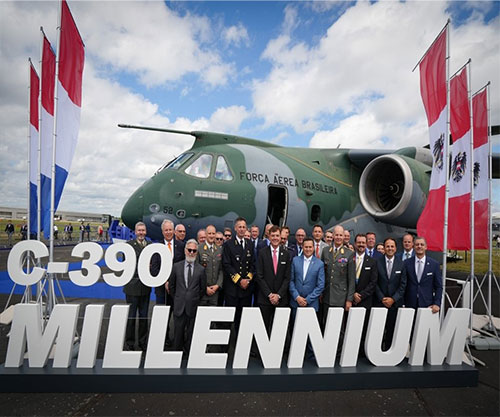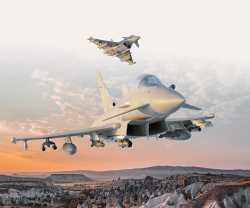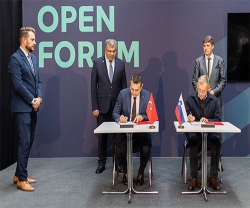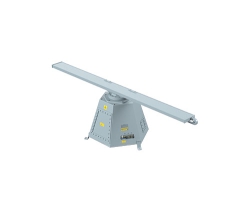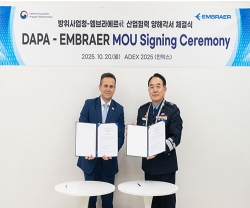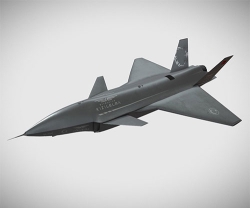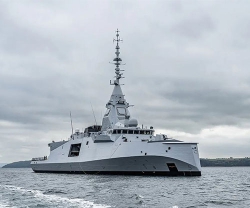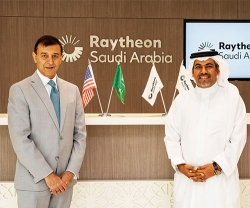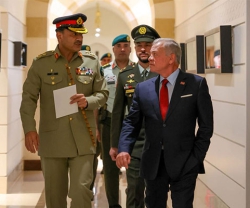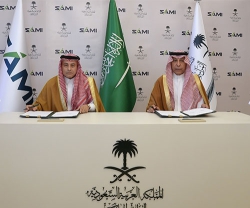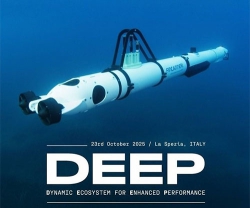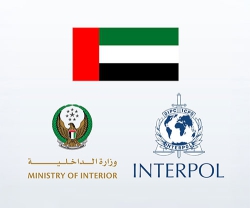The Dutch Ministry of Defense signed this week the contract for the acquisition of nine Embraer C-390 Millennium aircraft during a ceremony at the Farnborough Airshow. As part of the project ‘Replacement of Tactical Airlift Capacity’, the contract is a joint purchase, in cooperation with Austria – five aircraft for the Royal Netherlands Air Force and four aircraft for the Austrian Air Force.
With this joint order, both countries aim at increasing their ability to rapidly deploy or evacuate equipment and personnel worldwide, even under difficult operational conditions. The enhanced tactical airlift capacity provided by the C-390 increases operational flexibility and responsiveness, provides logistical support in various missions and operations, and enables a wide range of humanitarian and medical tasks.
The joint purchase will also allow both nations – as well as current and future operators – to cooperate and benefit from synergies in areas like training, logistics and future growth of the platform, together with the other C-390 operators in NATO nations. The C-390 Millennium provides maximum operational readiness enabling interoperability and connectivity in networked environments and multiple domains.
The C-390 will improve operational capacity by offering better performance, greater reliability, and higher transport capacity. Additionally, the choice for the C-390 ensures that the Royal Dutch and Austrian Air Forces are equipped with state-of-the-art technology to meet the mission demands of the future.
Since entering operation with the Brazilian Air Force in 2019 and the Portuguese Air Force in 2023, the C-390 has proven its capacity, reliability, and performance. The current fleet of aircraft in operation has accumulated more than 13,000 flight hours, with mission capable rate of 93% and mission completion rates above 99%, demonstrating exceptional productivity in the category.
The C-390 can carry more payload (26 tons) compared to other medium-sized military transport aircraft and flies faster (470 knots) and farther, being capable of performing a wide range of missions such as transporting and dropping cargo and troops, medical evacuation, search and rescue, firefighting, and humanitarian missions, operating on temporary or unpaved runways. The aircraft configured with air-to-air refueling equipment, with the designation KC-390, can operate both as a tanker and as a receiver, in this case also by receiving fuel from another KC-390 using pods installed under the wings.
Embraer also announced during the Farnborough International Airshow the sale of six A-29 Super Tucano aircraft to the Paraguayan Air Force (FAP).
As a multi-mission aircraft, the A-29 provides the Air Forces with versatility for armed reconnaissance, close air support, light attack, and advanced training missions on a single platform, which exponentially increases the institutions' availability and operational flexibility. The operation, with deliveries scheduled from 2025, includes mission equipment and an integrated logistics services agreement.
The A-29 Super Tucano is the global leader in its category, boasting over 260 orders, surpassing 550,000 flight hours, with 60,000 of those in combat. The number of air forces operating the A-29 Super Tucano steadily expands due to its unmatched combination of features, making it the most cost-effective, accessible, and versatile choice.
For Air Forces seeking a proven, comprehensive, efficient, reliable, and cost-effective solution on a single platform, coupled with great operational flexibility, the A-29 Super Tucano offers a wide range of missions such as close air support, air patrol, special operations, air interdiction, JTAC, forward air controller (FAC), air and tactical coordinator (TAC), Armed ISR, border surveillance, reconnaissance, air escort, basic, operational and advanced training, transition to air superiority fighters, JTAC/LIFT and FAC training.
The A-29 Super Tucano is the most effective multi-mission aircraft in its category, equipped with state-of-the-art technology for precise target identification, weapons systems, and a comprehensive communications suite. Its capability is further enhanced by advanced HMI avionics systems integrated into a robust airframe capable of operating from unpaved runways, in austere environments and without infrastructure. Furthermore, the aircraft has a simple maintenance concept, which offers high levels of reliability, availability, and structural integrity with low life cycle costs.
A global aerospace company headquartered in Brazil, Embraer has businesses in Commercial and Executive aviation, Defense & Security and Agricultural Aviation. The company designs, develops, manufactures and markets aircraft and systems, providing Services & Support to customers after-sales.
Since it was founded in 1969, Embraer has delivered more than 8,000 aircraft. On average, about every 10 seconds an aircraft manufactured by Embraer takes off somewhere worldwide, transporting over 145 million passengers a year.
Embraer is the leading manufacturer of commercial jets up to 150 seats and the main exporter of high-value-added goods in Brazil. The company maintains industrial units, offices, service and parts distribution centers, among other activities, across the Americas, Africa, Asia and Europe.

